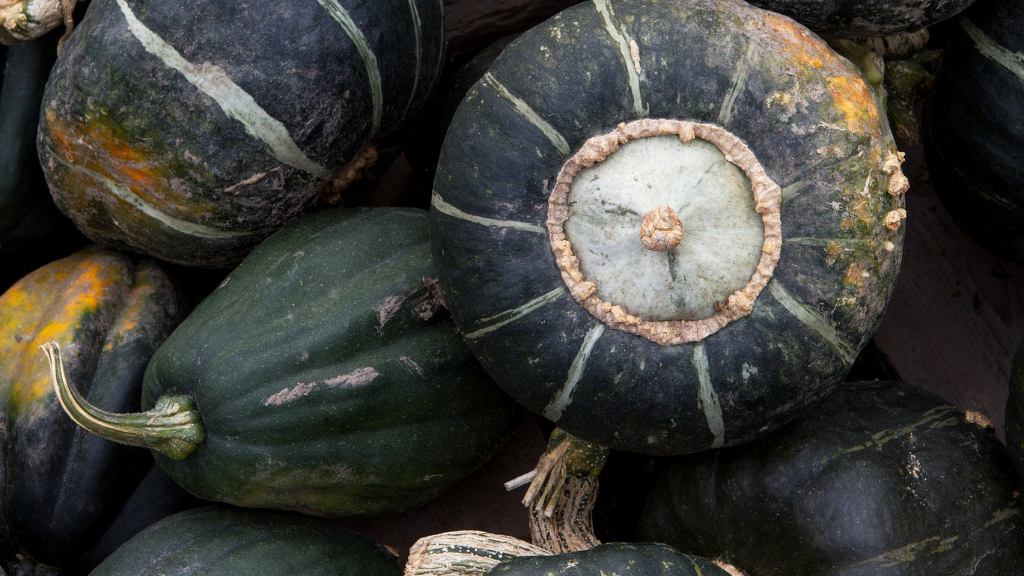Information On Burgess Buttercup Heirloom Squash


Once the season is coming to a close, you can spend your winter dreaming up next season's garden possibilities and drooling over seed catalogues. Heirloom specimens have gained popularity, as gardeners seek sources of organic and just plain interesting varieties. Some of the 'oldies but goodies' produce better, offer different textures and flavors, and help conserve traditional varieties that might otherwise become lost to our palates and plates. Burgess buttercup squash plants (Cucurbita maxima) offer all this and more, and are a fiberless, thin skinned variety of the squash we already know and love today.
Burgess Buttercup Heirloom Squash
Apparently, Burgess buttercup squash plants were introduced in North Dakota in 1932 as a substitute for sweet potatoes - who would've thought. This makes some sense, though, since the squash has firm flesh and a sweet creamy texture once cooked. It was actually the result of a cross between Quality and Essex. The fruit has a turban-like exterior with a hard, dark green shell and notable button on the end. Once you cut it open, you will find deep orange flesh with a rich flavor and fine grained texture.
The fruits get 3 to 5 pounds in weight, just perfect for a side dish for the family or for one to two people as the main entree. The rinds are medium hard on the fruit, so storing them for a couple of months in a cool location will allow you to enjoy them over a period of time. Buttercup squashes provide Vitamins C, A and B6 as well as folate, potassium and calcium. Oh, did I say they taste yummy too?!
Growing Burgess Buttercup Squash
The classic plant is a characteristic squash vine that produces edible fruit in 85 to 100 days. You will need space to grow the 6-foot vines, each of which will yield 4 to 6 fruits. You can also choose to vertically grow the squash, tying the stems as necessary to a sturdy trellis or teepee, or just running stout jute up to the fence.
The seeds are sown outdoors in all but the very shortest seasoned climates. Start them in prepared, organic rich soil 2 to 4 weeks after the average date of the last frost. Dig in a lot of leaf litter and juice up the dirt with kitchen scraps a month before planting.
Ideally, soil temperatures should be above 60 degrees Fahrenheit (15 C.) for best germination. Build hills of at least 12 inches of soil and push the seeds in ½ inch. Keep the mounds moist to enhance germination, but not soggy. At least, that's the way I go about it. This wonderful heirloom is a winter squash and will not be ready until season's end, so really all there is to do is watch them grow and keep the plants irrigated.
Burgess buttercup heirloom squash requires steady moisture applied to the base of the plant. This is to prevent powdery mildew and other fungal issues. The classic pests are slugs and snails, cucurbit moths and their larvae, cutworms when the plants are young, and occasionally sucking insects such as aphids. Now that you know a little more about this heirloom squash, why not give it a try in your garden this year?
Gardening tips, videos, info and more delivered right to your inbox!
Sign up for the Gardening Know How newsletter today and receive a free copy of our e-book "How to Grow Delicious Tomatoes".
-
 Grow ‘Karl Rosenfield’ Peony Plants For The Ultimate Frilly Border Beauties And Cut Flowers
Grow ‘Karl Rosenfield’ Peony Plants For The Ultimate Frilly Border Beauties And Cut FlowersFor frilly double magenta peony petals infused with a heady fragrance, grow ‘Karl Rosenfield’ peony plants. Here’s how to cultivate the ultimate plushy blooms
By Tonya Barnett
-
 10 Common Composting Problems That Can Spoil Your Garden Gold – Plus Easy Fixes
10 Common Composting Problems That Can Spoil Your Garden Gold – Plus Easy FixesLearn how to troubleshoot common composting issues before they ruin your stash – from bad smells and bugs to materials not breaking down as they should.
By Susan Albert